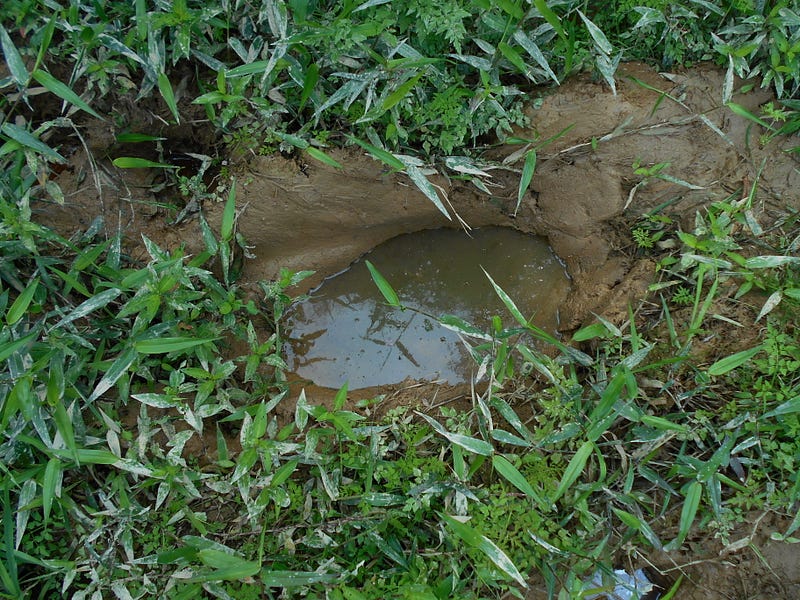The Hidden Ecosystem of Elephant Tracks: More Than Meets the Eye
Written on
Chapter 1: The Importance of Elephants in Ecosystems
Elephants are magnificent creatures that many of us adore. Whether it’s through documentaries, visits to the zoo, or circuses from our childhood, our interactions with these giants are often limited. However, their true impact becomes evident when we observe them in their natural environments.
Given their massive size, elephants significantly influence their habitats—both positively and negatively. For instance, if an elephant chooses to rest on a plant, that plant's survival is highly unlikely. Similarly, for farmers whose fields might be crossed by wandering elephants, the situation can be quite detrimental.
Despite these challenges, elephants contribute positively to their ecosystems. While feeding, they disturb various insects, creating opportunities for birds to feast. Interestingly, a substantial portion of the plant matter they consume isn't fully digested. Consequently, when they excrete, seeds and grains are left behind, providing nourishment for other species. Moreover, because elephants often roam great distances, they inadvertently transport seeds to new locations, depositing them alongside natural fertilizer, which promotes growth and diversity within their habitats.
As they consume vast amounts of grasses, the absence of elephants in an area can lead to an overgrowth of these plants. During dry seasons, this can result in wildfires that devastate the landscape. These are some of the evident benefits of elephants.
However, there are also less obvious advantages, such as the unique formations of their tracks. At first glance, one might think of elephant tracks merely as large impressions in the earth. But these depressions serve a more significant purpose.

An elephant track in a wet area, providing an unexpected sanctuary for wildlife.
These tracks can become ideal breeding grounds for frogs, as discovered by scientist Steven Platt during his explorations in Myanmar. On his initial visit during the dry season, he stumbled upon these tracks and returned the following year to find them filled with frog eggs and tadpoles!
So, what draws frogs to these elephant tracks repeatedly? Here are a few compelling reasons: 1. They offer safe nesting sites during dry periods. 2. The absence of predators, such as fish, ensures the safety of the eggs. 3. Groundwater seepage helps keep the tracks moist, even when the surrounding environment is dry.
Reflecting on this, we realize the dual nature of elephants' effects on their ecosystems. To truly understand how a species interacts within its environment, we must delve deeper than surface observations. It’s essential to recognize the intricate relationships that sustain biodiversity.
Ribbit, ribbit. Until next time, Rich
Hey! If you found this article enlightening, consider sharing it with your friends on social media!
Sources: - Water-filled Asian Elephant tracks serve as breeding sites for anurans in Myanmar by Steven Platt et al., 2019. - Impact of Elephants on Land by Global Sanctuary for Elephants. - Elephant tracks and frog breeding sites at Htamanthi Wildlife Sanctuary by Swe Win, May 2019. - Footsteps of Giants by Rachel Nuwer, September 2019.
Chapter 2: Exploring Elephant Habitats
Explore the natural habitats of African elephants in this engaging video that showcases their environment and behaviors.
Chapter 3: Understanding Human-Elephant Interaction
Delve into the study of elephant movements and the impact of human activities on their migration patterns in this insightful presentation.